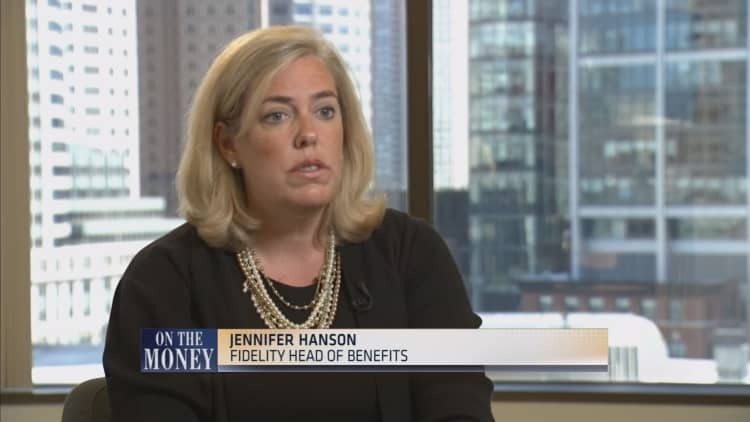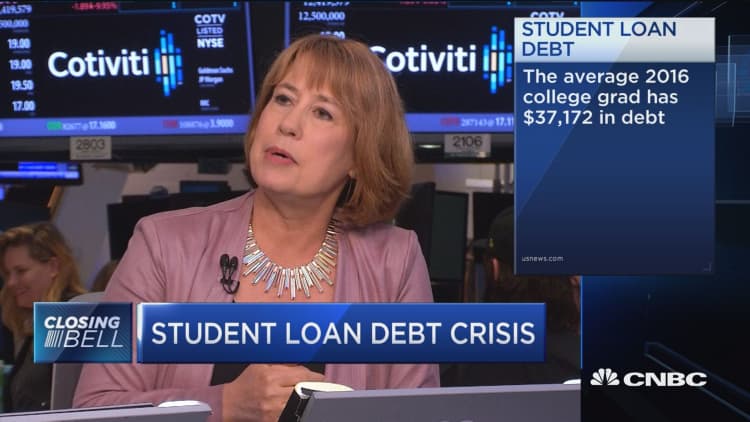
There's no need to take a wait-and-see approach on parts of Hillary Clinton's "debt-free college plan." Struggling borrowers can — and should — take action now.
As part of the candidate's higher education plan unveiled last week, the presumptive Democratic presidential nominee said that if elected, she would impose a three-month moratorium on federal student loan payments via executive action.
"With dedicated assistance from the Department of Education during this moratorium, borrowers will be able to consolidate their loans, sign up quickly and easily for income-based repayment plans, and take direct advantage of opportunities to reduce monthly interest payments and fees," according to a briefing about her plan.
Implicit in those "opportunities" are other elements of Clinton's college plan, which include the ability for borrowers to refinance their student loans at current rates and interest-free loan deferrals for aspiring entrepreneurs. Borrowers who are behind on debt would also get help during the hiatus to rehabilitate their loans.
Experts say the three-month loan-payment moratorium stands a better chance of happening than the headline of Clinton's plan — tuition-free education at in-state public colleges for families earning as much as $125,000 or less. That's because it doesn't require the cooperation of Congress or a major funding initiative.
"It's allowing people to take advantage of programs already in place," said certified financial planner Evelyn Zohlen, president of Inspired Financial in Huntington Beach, California. "The only people quote, unquote hurt are lenders, who may not see as much profit if people refinance to lower rates."
No doubt, consumers could use the help managing their student loan debt. Student loan delinquencies have been growing. More than a third of borrowers have been late on a payment at least once in the past year, and a quarter of them, more than once, according to the Financial Industry Regulatory Authority Investor Education Foundation's 2015 Financial Capability in the United States report. (See chart below for more details on demographic breakdown.)
Despite borrowers' struggles to pay, loan management options — from hardship deferrals to income-based repayment plans and refinancing — remain under the radar. Fewer than half of millennials have looked into options to reduce their monthly student loan payments or improve the terms of their loans, according to a recent Citizens Bank survey.
That's a big miss, said Mark Kantrowitz, vice president of strategy for Cappex.com, a college and scholarship search site. It's also one that's easily rectified — even while Clinton's plan is still pie in the sky.
"You don't need a moratorium to switch repayment plans into income-based repayment," he said. "It takes just a few minutes."
Depending on factors including the age and type of your federal loans, and your income, borrowers may be eligible for one or more of seven alternative repayment options; the government offers a five-question assessment to help you determine which, and what materials you need to move forward.

Assess other strategies, too. Many loan servicers still offer small rate reductions for having payments automatically debited from a bank account, and some employers offer aid to manage and repay student loan debt. There are also growing options to refinance your student loans through state-run programs and private lenders.
Crunch the numbers to see exactly how much you'll save by reworking your loans in various ways. Each has pros, as well as pitfalls. A longer repayment term not only lengthens your payment commitment, it also means you'll pay more overall, Zohlen said.
Refinancing federal student loans into a new, private one may come at the price of losing federal protections to postpone payments in times of financial hardship.
Keep in mind that cutting your loan rate may not cut your monthly payment by as much as you think, said Kantrowitz. Clinton's proposal, for example, estimates that borrowers refinancing into new loans at current rates would save the typical borrower $2,000 over the life of their loan.
"Divided by 120 payments, and that's $16 a month," he said. "A free pizza a month is what she's proposing."




